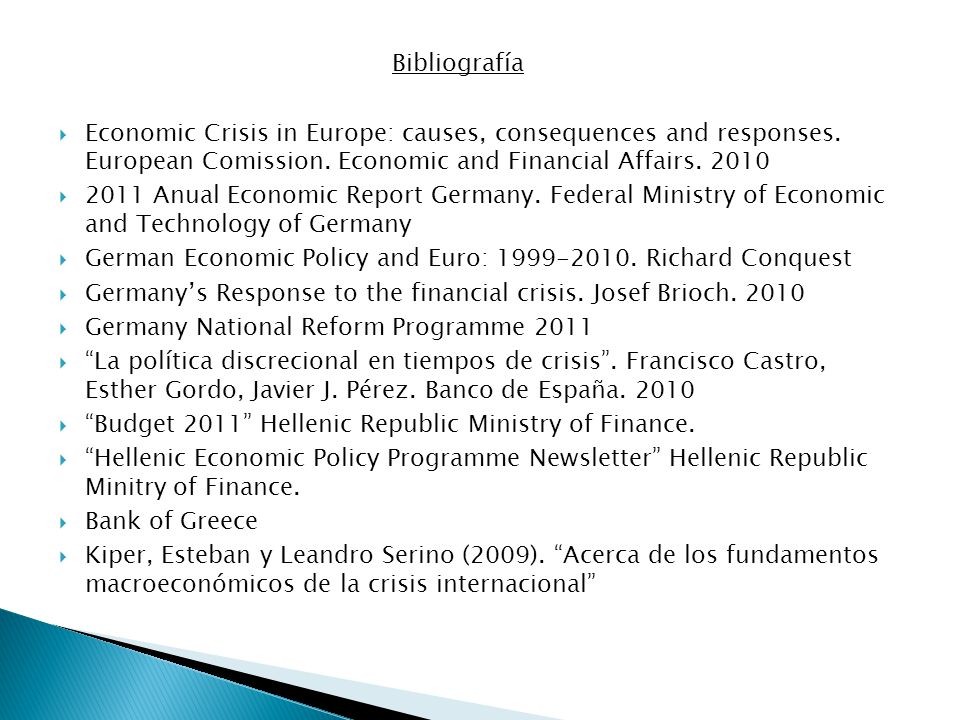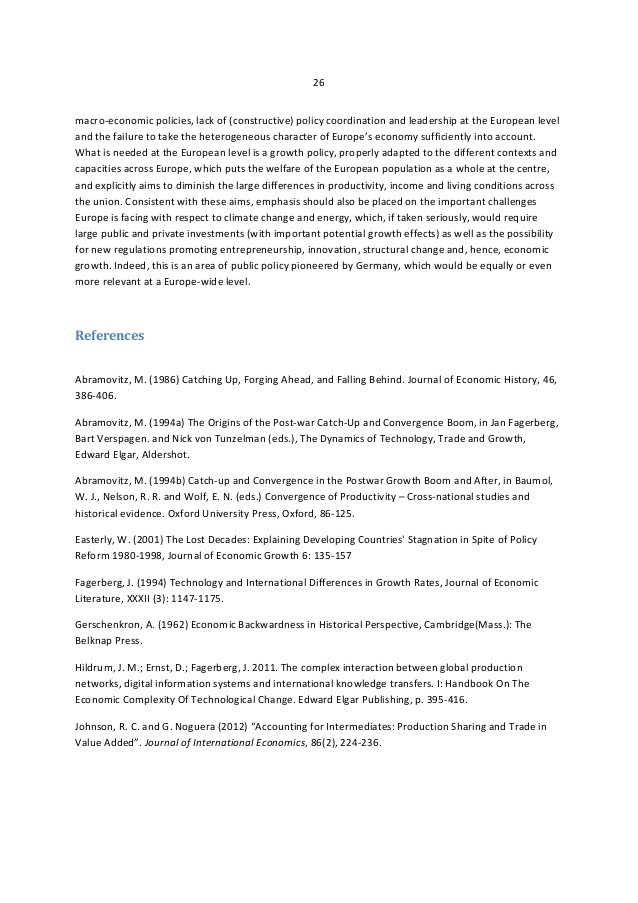Economic crisis in Europe Cause consequences and responses
Post on: 20 Май, 2015 No Comment

Search form
Economic crisis in Europe: Cause, consequences, and responses – A report by the European Commission
István P. Székely, Paul van den Noord 06 October 2009
The financial crisis that began in 2007 is without precedent in post-war economic history (Eichengreen and O’Rourke. 2009). It was preceded by a long period of rapid credit growth, low risk premia, abundant liquidity, and the development of real estate bubbles. Overstretched leveraging positions rendered financial institutions extremely vulnerable to corrections in asset markets. As a result, a downturn in a relatively small corner of the financial system (the US subprime market) was sufficient to topple the whole structure. Such episodes have happened before (e.g. Japan and the Nordic countries in the early 1990s, the Asian crisis in the late-1990s), but they remained largely regional. The important difference is that, like during the Great Depression of the 1930s, the current crisis is global.
While it may be appropriate to consider the Great Depression as the best benchmark in terms of its financial triggers, it has also served as a great lesson. Governments and central banks are now well aware of the need to avoid the policy mistakes of the 1930s. Bank runs have been avoided, monetary policy has been eased aggressively, and governments have released substantial fiscal stimulus. Unlike during the Great Depression, countries in Europe or elsewhere have not resorted to protectionism large enough to have a macroeconomic impact. This crisis demonstrates the importance of EU coordination, even as it has called attention to the need for further progress in this regard.
Notwithstanding the heavy policy intervention, the EU economy, like other developed economies, is projected to shrink by some 4% in 2009, the sharpest contraction in the EU’s history (European Commission 2009). Signs of incipient recovery abound, but this is expected to be rather sluggish as demand will remain depressed due to deleveraging across the economy as well as inevitable structural adjustments. As discussed in a recent Commission report (European Commission 2009), the crisis is likely to raise five challenges.
1. Unless policies change considerably, the growth potential will suffer as parts of the capital stock are obsolete and increased risk aversion will weigh on capital formation and R&D (see Costello et al. 2009).
Recent studies suggest that past episodes of financial distress have resulted in sizeable output losses that are never entirely recovered. Estimates emerging from econometric work by the European Commission and simulations with its QUEST model put the potential output loss at up to 5%. Moreover, a reversal of financial development may weaken the incentives for structural reform, thereby adversely affecting potential growth further. But the historical evidence shows that crises also provide great opportunities to undertake far-reaching structural measures. This opportunity should not be missed.
2. While job losses have been contained so far, eventually the impact of rapidly rising unemployment will be felt.
So far lower levels of activity have been reflected mainly in shorter working hours, fostered by employment support schemes that have limited the increase in headline unemployment statistics (Figure 1). The relatively muted unemployment response may partly be the result of past labour market reform, but this is not uniformly the case in all Member States. Where labour markets are still rigid, the weak unemployment response is probably not sustainable and more lay-offs are likely to be in the pipeline. It will entail social hardship of many kinds, especially for highly indebted households already hit by downturns in housing markets. In those Member States, labour market measures should be high on the reform agenda.
Figure 1. Unemployment and hours worked
3. The fiscal deficits and debt will continue to increase, also in a structural manner as tax bases shrink permanently and contingent liabilities stemming from bank rescues may materialise.
As depicted in Figure 2, the pace of increase of the deficits is comparable to earlier financial crisis episodes. But the distribution of the increases in fiscal deficits is wide. The public finances of countries with important financial centres and/or that have seen major housing and construction booms have been particularly affected. To some extent this is deliberate, broadly in line with the distribution of “fiscal space” and serving to provide short-run demand support. But, as may be expected, public indebtedness is increasing too, and this will need to be reversed when recovery takes hold. As indicated by Figure 3, the projected increase in public debt – about 20% of GDP to end 2010 – is typical for a financial crisis episode. However, the jumping-off point is considerably higher than in the past.
Figure 2. The fiscal position relative to previous banking crises
Figure 3. Government debt relative to previous banking crises
4. The financial crisis has asymmetric effects, which poses a long-lasting challenge for intra-EU adjustment.
The way countries are affected depends on their initial conditions and associated vulnerabilities.
- Countries that entered the crisis with a housing bubble and a large net foreign liability position face a need to shift activity from construction to export-oriented activities and to diminish their dependency on external financing.
- Countries that had been running large current account surpluses and had an associated greater exposure to toxic financial assets need to reduce their export dependency and work off their balance sheet problems.

Adjustment is necessary in both cases, but the policy recipes may be quite different.
5. There are potential implications of the present crisis for the resolution of the global imbalances.
The ongoing correction of the current account deficit of the US associated with the deleveraging of its economy is unlikely to be matched by an equivalent correction of the current account surpluses of the emerging market economies (China, in particular). If so, the euro area, representing more than two-thirds of the EU economy, will have to bear the brunt of the adjustment. The euro area would need to find indigenous sources of growth, including through nurturing dynamic services sectors.
This crisis has demonstrated the importance of a coordinated crisis-management framework. It should contain the following building blocks:
- Crisis prevention to avoid a future repeat.
This should be mapped onto a collective judgment as to what the principal causes of the crisis were and how changes in macroeconomic, regulatory, and supervisory policy frameworks could help prevent their recurrence. Policies to boost potential growth and competitiveness would also bolster the resilience to future crises.
- Crisis control and mitigation to minimise the damage by preventing systemic defaults or by containing the output loss and easing the social hardship stemming from recession.
Its main objective is thus to stabilise the financial system and economic activity in the short run. To strike the right balance between national preoccupations and spillover effects affecting other Member States, it must be coordinated across the EU.
- Crisis resolution to bring crises to a lasting close and at the lowest possible cost for the taxpayer, while containing systemic risk and securing consumer protection.
This requires reversing temporary support measures and action to restore economies to sustainable growth and fiscal paths. This includes policies to restore banks’ balance sheets, restructure the banking sector, and an orderly policy “exit”, including from expansionary macroeconomic policies.
The beginnings of such a framework are emerging, building on existing institutions and legislation, complemented by new initiatives. Naturally, most EU policy efforts to date have focused on crisis control and mitigation. EU policymakers became acutely aware that financial assistance by countries to their financial institutions and unilateral extensions of deposit guarantees entail large and potentially disrupting spillovers. This led to emergency summits of the European Council at the Heads of State Level in the autumn of 2008 – for the first time in history also of the Eurogroup – to coordinate these moves. The Commission’s role was to help ensure that financial rescues attain their objectives with minimal competition distortions and negative spillovers. Fiscal stimulus also has cross-border spillover effects, through trade and financial markets. The European Economic Recovery Programme (EERP, European Commission 2008) adopted in November 2008 was motivated by the recognition of these spillovers.
The framework for financial crisis prevention that was in place prior to the crisis proved underdeveloped – otherwise the crisis most likely would not have happened. But first steps have also been taken to redesign financial regulation and supervision – both in Europe and elsewhere – with crisis prevention in mind. Most recently, the European Commission has adopted draft legislation to create a new European Systemic Risk Board to detect risks to the financial system. It will also set up a European System of Financial Supervisors, composed of national supervisors and three new European Supervisory Authorities for banking, securities, and insurance and occupational pensions. The design of crisis resolution policies is now becoming a main task – not least because it should underpin the effectiveness of crisis control policies via its impact on confidence. Any premature withdrawal of policy stimulus should be avoided, but exit strategies should be ready for implementation when the recovery is firm, and they should be embedded in a broader policy framework that also entails growth-enhancing structural reforms.
Editor’s Note: The authors write here in a personal capacity.
European Commission (2008), “A European Economic Recovery Plan ”, Communication from the Commission to the European Council COM(2008) 800 final.














